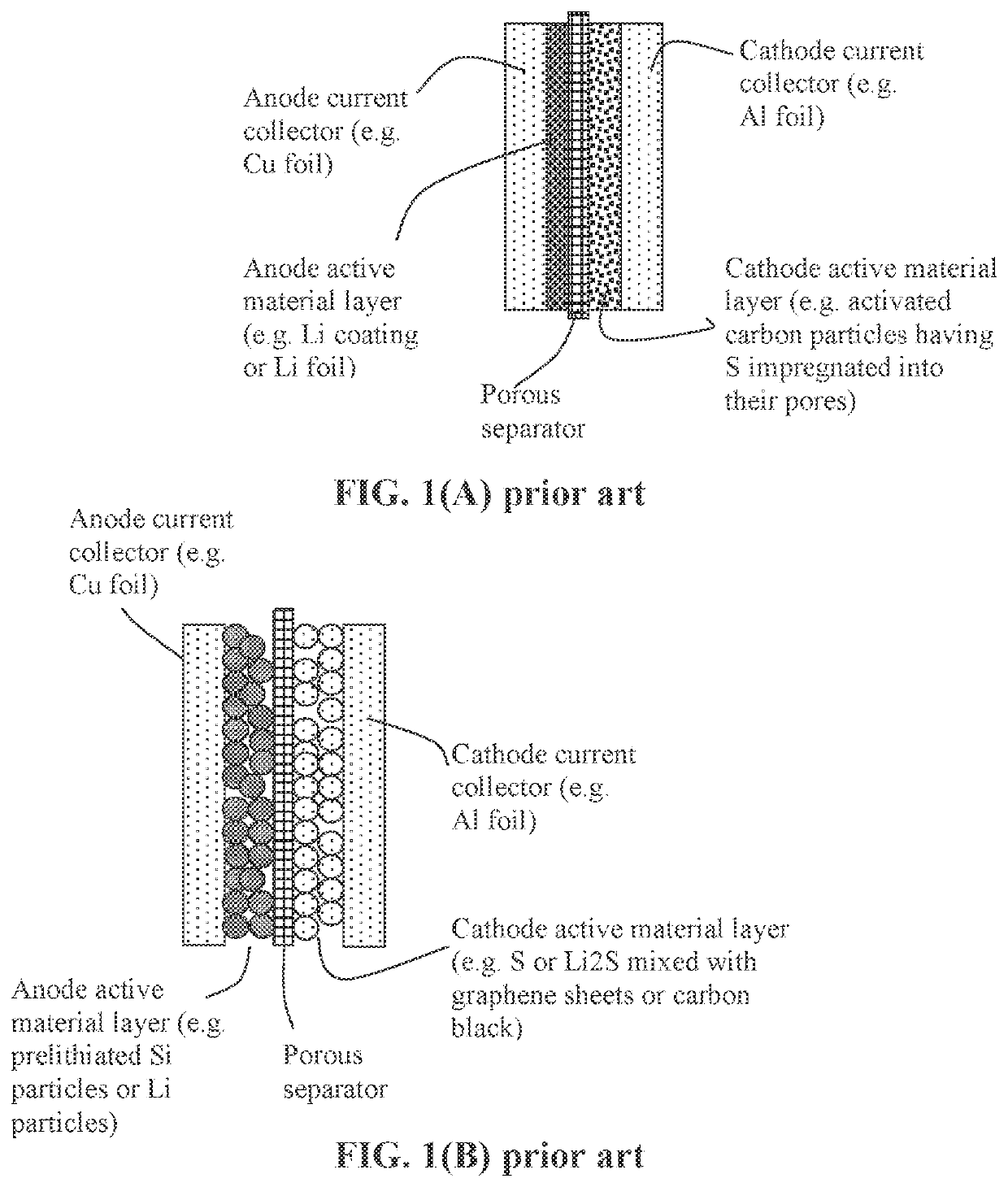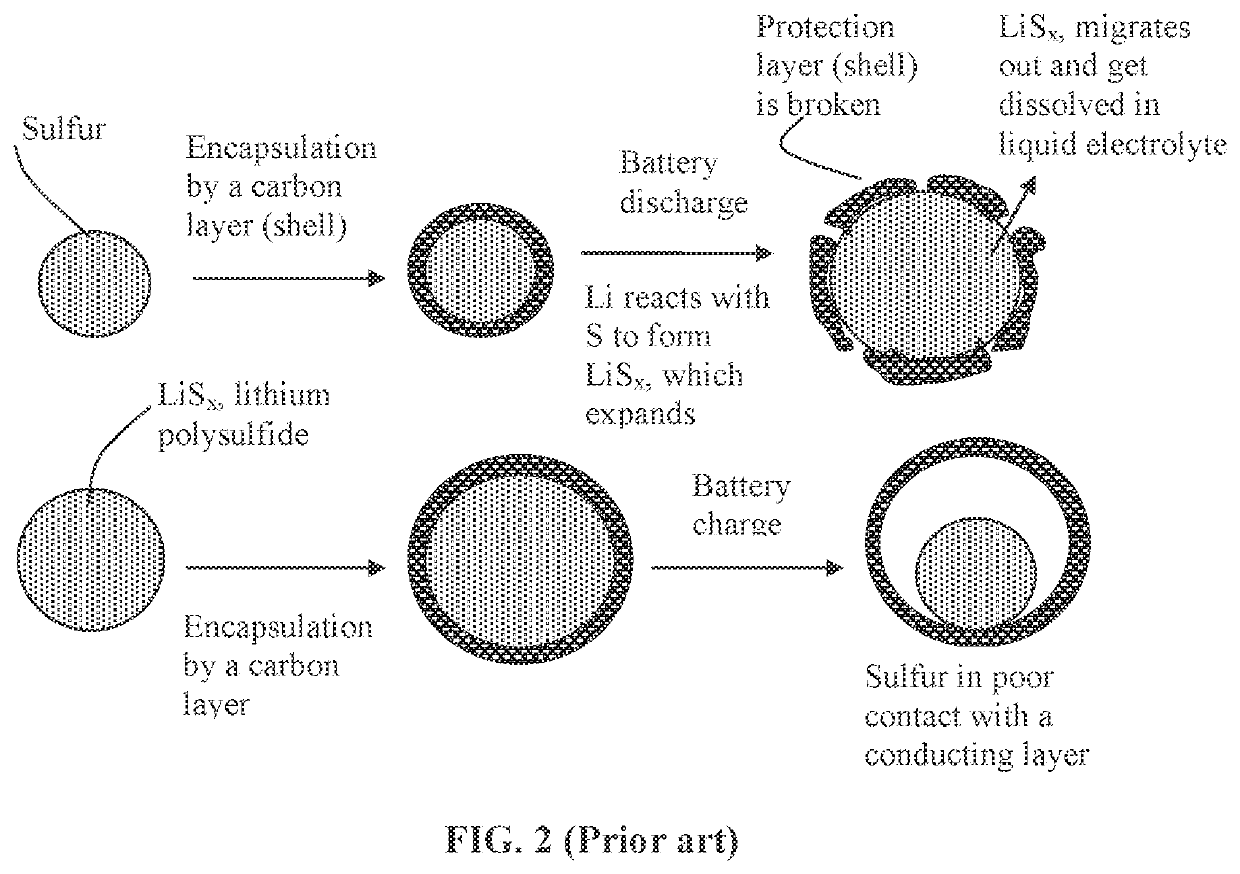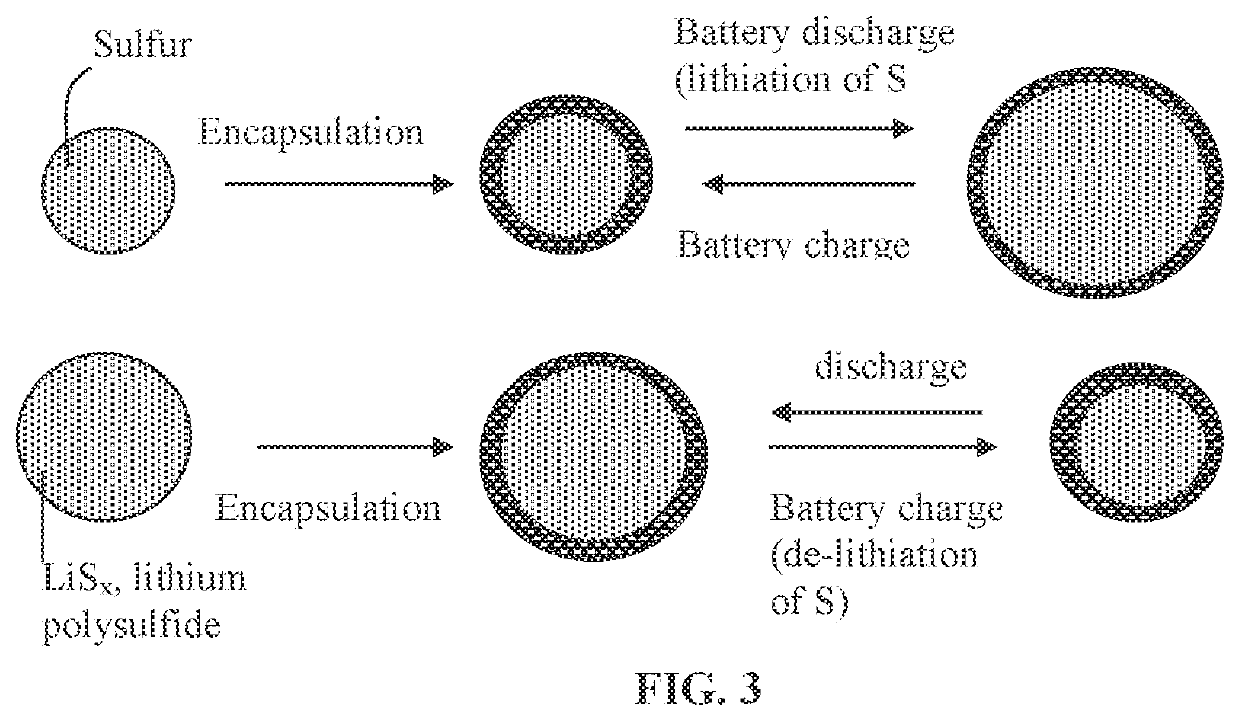Alkali metal-sulfur secondary battery containing cathode material particulates
a secondary battery and alkali metalsulfur technology, applied in secondary cell servicing/maintenance, cell components, electrochemical generators, etc., can solve the problems of dendrite formation and related internal shorting problems, and achieve the effect of reducing the number of carbon-sulfur composites
- Summary
- Abstract
- Description
- Claims
- Application Information
AI Technical Summary
Benefits of technology
Problems solved by technology
Method used
Image
Examples
example 1
Sulfur with Carbon / Graphite Particles Via Ball-Milling to Form Sulfur-Containing Particles
[0138]Sulfur and lithium polysulfide particles and particles of soft carbon (i.e. graphitizable disordered carbon), natural graphite, mesophase carbon, expanded graphite flakes, carbon nanofibers, and graphene sheets (50% to 85% by weight of S in the resulting composite or hybrid) were physically blended and then subjected to ball milling for 2-24 hours to obtain S-containing composite particles (typically in a ball or potato shape). The particles, having a typical size of 1-10 μm, containing various S contents, were then embraced with a thin layer of sulfonated elastomer composite (to be further described later). Some of the resulting particulates, along with a conductive additive (5% by wt.) and a resin binder (PVDF, 5%), were then combined and made into a layer of cathode using the well-known slurry coating procedure.
example 2
lfur Melt or Liquid Solution Mixing
[0139]One way to combine sulfur with a conducting material (e.g. carbon / graphite particles) is to use a solution or melt mixing process. Highly porous activated carbon particles, chemically etched mesocarbon microbeads (activated MCMBs), and exfoliated graphite worms were mixed with sulfur melt at 117-120° C. (slightly above the melting point of S, 115.2° C.) for 10-60 minutes to obtain sulfur-impregnated carbon particles.
example 3
on of Sulfur-Coated Graphene Sheets and their Secondary Particles (Particulates)
[0140]The step involves producing vapor of elemental sulfur, allowing deposition of S vapor on surfaces of single-layer or few-layer graphene sheets. The graphene sheets, suspended in a liquid medium (e.g. graphene oxide in water or graphene in NMP), were sprayed onto a substrate (e.g. glass surface) to form a thin layer of graphene sheets. This thin layer of graphene was then exposed to sublimation-generated physical vapor deposition. Sublimation of solid sulfur occurs at a temperature greater than 40° C., but a significant and practically useful sublimation rate typically does not occur until the temperature is above 100° C. We typically used 117-160° C. with a vapor deposition time of 10-120 minutes to deposit a thin film of sulfur on graphene surface (sulfur thickness being approximately from 1 nm to 10 nm). This thin layer of graphene having a thin film of sulfur deposited thereon was then easily br...
PUM
 Login to View More
Login to View More Abstract
Description
Claims
Application Information
 Login to View More
Login to View More - R&D
- Intellectual Property
- Life Sciences
- Materials
- Tech Scout
- Unparalleled Data Quality
- Higher Quality Content
- 60% Fewer Hallucinations
Browse by: Latest US Patents, China's latest patents, Technical Efficacy Thesaurus, Application Domain, Technology Topic, Popular Technical Reports.
© 2025 PatSnap. All rights reserved.Legal|Privacy policy|Modern Slavery Act Transparency Statement|Sitemap|About US| Contact US: help@patsnap.com



